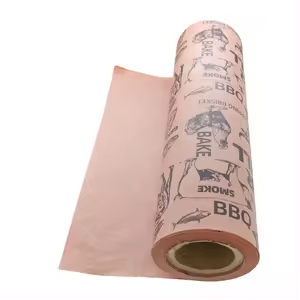Meat is one of the most loved foods around the world, but it is also one of the most delicate in terms of storage and freshness. Without the proper care, it is able to spoil quickly, lose its taste, and even become risky to eat. Protecting meat from spoilage obviously has constantly been a challenge; however, conventional methods combined with cutting-edge safe practices make it possible to preserve meat fresh for longer. Whether you’re a food business proprietor, a butcher, or maybe someone at domestic who loves cooking, understanding those natural methods is vital. In this artice, we are able to discover herbal approaches to protect meat from spoilage, why freshness matters, and the way corporations can preserve great without depending too much on artificial preservatives.
Why Is Meat Spoilage Such a Big Concern?
Meat is incredibly perishable due to the fact that it’s in proteins and moisture, creating a super environment for micro organisms and microorganisms to grow. Once those bacteria begin spreading, the flavor, taste, and protection of the beef decline in no time. Imagine serving or promoting meat that smells ordinary or looks discolored; it creates a bad impact. This is why protective meat obviously isn’t just about extending shelf lives, but also approximately ensuring protection and retaining customer confidence. Understanding spoilage also helps in deciding on the right techniques to slow down this natural process.
Can Temperature Control Help in Keeping Meat Fresh?
One of the most natural methods to protect meat from spoilage is temperature control. Cold slows down bacterial activity and delays spoilage, which is why refrigeration and freezing are so widely used. At home, certainly setting meat in the fridge at the perfect temperature can keep it for days, whilst freezing allows it to last even longer. Businesses, then again, depend on superior chilling structures that keep meat safe till it reaches customers. The key is consistency; temperature fluctuations can inspire bacterial growth even if the meat is stored in a cold environment. So, whether or not it’s in a butcher’s keep, a restaurant, or a home kitchen, proper cooling is the key to safe meat protection.
How Does Proper Wrapping Extend Freshness?
Wrapping plays an important role in protecting meat from spoilage. The presence of air hastens oxidation and microbial growth, which is why meat needs a barrier that keeps it fresh. Natural strategies of wrapping, inclusive of wrapping meat tightly in breathable but protective cloth, help in slowing down spoilage. For organizations within the food area, wrapping also adds a further layer of trust, just as with clients, who anticipate the product to be secure and hygienic. Even at home, the usage of the right wrapping before refrigerating or freezing meat makes a big difference. For oily or fatty cuts, many experts also advocate alternatives like printed butcher paper to maintain the wrapping clean and effective without affecting freshness.
Do Natural Salts and Herbs Really Work as Preservatives?
Salt has been used for centuries as a natural preservative for meat, and it’s still one of the best methods. By drawing out moisture, salt makes it tougher for microorganisms to survive, thus slowing down spoilage. Herbs like rosemary, thyme, and oregano are also recognized to have antimicrobial properties, which can help protect meat, evidently. While those strategies might not keep meat fresh for weeks without refrigeration, they’re fantastically powerful for shorter durations and are extensively utilized in conventional cooking. Businesses that address cured meats, for example, rely heavily on salt and herbs, no longer most effective for preservation, but also for boosting taste. These herbal methods give meat an extended lifestyle at the same time as maintaining it chemical-unfastened.
What Role Does Hygiene Play in Meat Preservation?
No matter what natural strategies you use, hygiene is step one in protective measures from spoilage. From slaughterhouses to kitchens, every level calls for easy handling. Dirty surfaces, unwashed tools, or improper hand washing can spread microorganisms to the meat. Businesses that spend money on proper hygiene practices not only protect their products but also protect their popularity. At home, simple steps like washing hands earlier than preparing meat, cleansing and reducing boards, and avoiding cross-infection with other foods pass an extended manner in preventing spoilage. Without hygiene, even the exceptional preservation strategies lose their effectiveness.
Can Airflow and Moisture Control Keep Meat Safe?
Airflow and moisture are two hidden elements that impact meat spoilage. Too much moisture results in a bacterial boom, whilst terrible airflow in storage can create warm spots in which spoilage begins. Natural techniques, including wrapping meat well and storing it in properly-ventilated areas, can reduce these dangers. For instance, dry-aging meat is a traditional exercise that is based on controlled airflow and occasional humidity to enhance flavor while preserving the product safety. Even in smaller kitchens, making sure that meat isn’t sitting in excess water or saved in a sealed, damp environment enables preserving freshness. By balancing airflow and moisture, businesses and households can lessen waste and maintain exceptional conditions.
Why Should Businesses Focus on Natural Preservation?
Customers nowadays care approximately what goes into their food, and lots of opt for products free from artificial preservatives. This is where herbal preservation techniques give groups an edge. Using techniques like right cooling, hygienic handling, and natural flavoring with herbs not only extends shelf life but also builds trust with clients. Freshness is immediately related to satisfaction, and whilst organizations display that they care about satisfaction, customers’ words. For restaurants, sparkling meat makes tastier food, even as for outlets, it means repeat purchases. Choosing printed wax paper natural upkeep isn’t pretty much protecting meat; it’s about protecting customer loyalty and long-term fulfillment.
Conclusion
Protecting meat from spoilage obviously isn’t always best feasible but also incredibly practical whilst achieved efficiently. From temperature manipulation and right wrapping to using herbal salts, herbs, and true hygiene practices, those methods preserve meat sparkling and safe without relying on synthetic chemical substances. Businesses gain by gaining clients they accept as true with, even as people enjoy healthier meals. Meat is a treasured food, and with the proper care, it may be preserved in ways that honor each tradition and modern-day expectations. By focusing on freshness and protection, friends and families alike can reduce waste, serve higher food, and create more value from each cut of meat.



